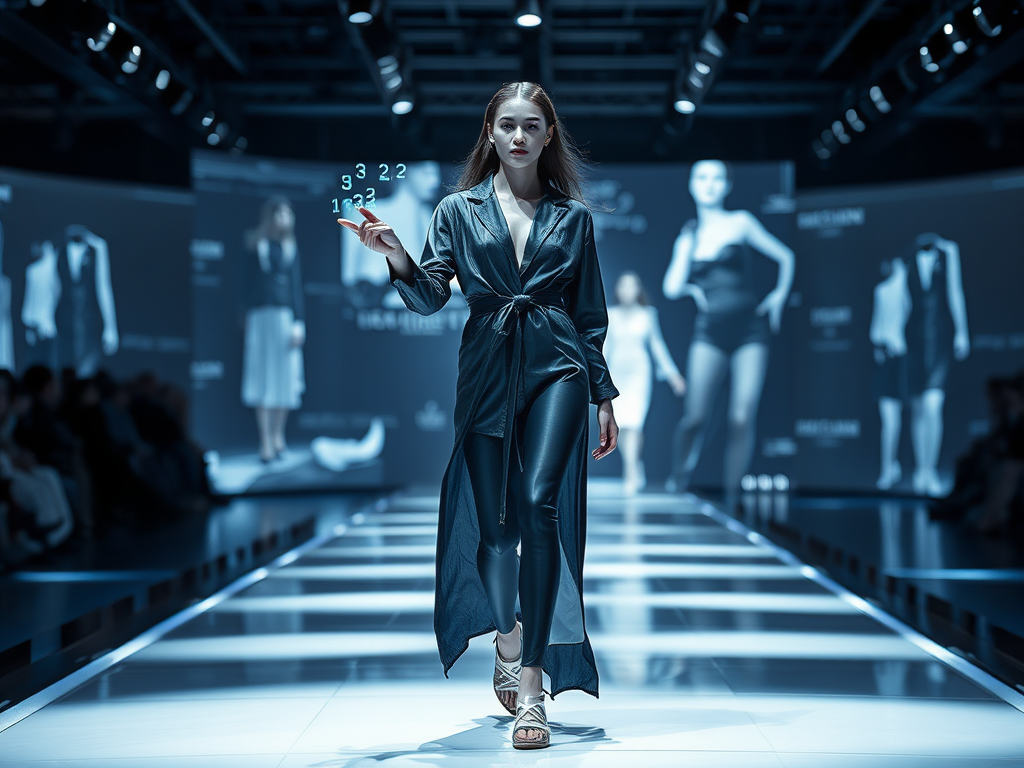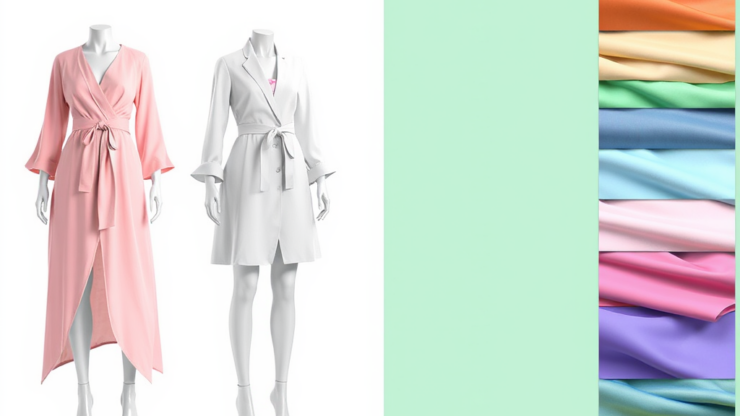In today’s world, the fusion of technology and fashion raises a lot of curiosity. The integration of artificial intelligence (AI) has shifted the perspective of communication and creation in fashion towards a more revolutionary direction. Picture a reality where creativity is maximized due to algorithms, and trends are anticipated with precise accuracy. Digital fashion does not only represent a shift in design; it fosters a change in perception and interaction with clothes. The launch of Cloth Off AI, which enables users to effortlessly remove and replace clothing virtually, represents more than just a novelty; it marks the transformation toward a more sustainable, accessible, and personalized fashion industry. This article explores countless dimensions that AI is transforming in the world of digital fashion.
The Rise of AI in Fashion

AI systems take charge in analyzing a lot of data, effectively turning consumer preferences into useful information. From marketing to design and production, AI technology has penetrated many industries in the fashion world. Knowing how a consumer behaves is extremely important in a business environment and AI cannot be programmed any better. This information permits brands to come up with designs that sales fully appreciate. Additionally, brands can also shift with the trends in real time which is incredibly important in the digital world. The use of AI in fashion design speeds up the process of creativity and effectiveness as well.
Data-Driven Design
Placing emphasis on data-driven design is fundamental when it comes to AI and fashion. Designers have at their disposal advanced tools for real-time data analysis that reveal consumer preferences, making previously unattainable features feasible. This premise results to the design of collections which are gorgeous and serviceable to the market. Consequently, fashion companies have enhanced engagement with customers, higher sales rates, and greater customer satisfaction. With the use of AI, brands are able to identify impending trends, giving them an edge over competitors. Designs are not only becoming smarter, they are also more in sync with the people who wear them.
AI-Assisted Design Tools
AI-enhanced design tools fundamentally alter how designers go about their work; these tools make it easy to streamlining fabrication and revising designs beyond what was previously possible. In a matter of moments, designers can test out numerous concepts, get feedback, and update them accordingly. Thanks to machines, human creativity is now synergized with efficiency which creates additional possibilities, further fueling creativity. Some AI tools even propose design components based on current trends, guaranteeing that new collections are relevant. This marriage of creativity together with machine ingenuity is incredibly impactful for the world of fashion.
Virtual Fashion Shows

AI is reshaping how fashion collections are exhibited with the emergence of virtual fashion shows that can be experienced globally. Brands build engaging narratives through digital platforms to provide immersive experiences that can be accessed irrespective of geographical barriers. Virtual fashion shows enhance the consumer experience by making haute couture widely available and easier to attend. Fashion shows are now easily accessible with newer formats and advanced storytelling techniques being employed by designers and brands. Designers are changing the approach to showcasing their designs by integrating visual storytelling and technology into virtual fashion shows. The transition indicates the industry’s pivot from exclusivity to engagement.
Creating Immersive Experiences
Virtual fashion shows engage consumers like never before. Now, participants can actively engage with designs and even view the clothing pieces virtually prior to acquiring them. Such engagement not only improves participation, but also builds stronger emotional ties with the brand. For example, users can interact with the model’s rotation, zoom into the fabric to see the textures, and post it on social media. Such technologies create a crossover of gaming and fashion, making it enjoyable and interactive. In summary, the transition towards virtual shows has established an engaging environment, where participation and enjoyment effortlessly coexist.
Enhancing Accessibility
The opportunities presented by these virtual events cannot be underestimated. Fashion enthusiasts from various backgrounds can now access the newest styles and collections without travelling or needing special passes. This shift in fashion is advantageous not only to the users but also to the companies looking to expand their audience. The integration of social media allows easy sharing and generation of excitement in a way that conventional shows would never accomplish. Consequently, companies can focus on different markets and build a loyal, proactive, and educated customer base. The adoption of AI and virtual formats by the fashion industry marks the start of a new era dominated by inclusivity.
| AI Application | Impact on Fashion |
|---|---|
| Data Analysis | Informs design decisions based on trends. |
| Virtual Try-ons | Enhances online shopping experiences. |
| AI Custom Fit | Improves the accuracy of size recommendations. |
The Role of AI in Personalization
AI has made personalization a priority is modern retail and has single handedly transformed the fashion industry by suggesting unique recommendations for each individual. Users are provided with tailored recommendations that best suit their tastes and expectations with the help of advanced algorithms and artificial intelligence. Increased personalization improves the level of satisfaction for customers and enhances the chances of making repeat purchases. Besides preferences, AI can also consider location and even seasonal trends while making recommendations. This transforms the shopping experience to be tailor-fit for each individual which in turn promotes loyalty and growth.
Custom Fit Algorithms
The online shopping experience is enhanced by AI with their problem solving capabilities like providing fit algorithms. Fit recommendations can be customized with user data analysis that includes body measurements, preferences, and purchase history. This solves one of the major issues within e-commerce, which is size discrepancies that yield high return rates. Ultimately, customer satisfaction increases with size accuracy leading to improved trust in the brand. Demonstrating how efficiency of business operations improves AI technology also meets customer demands. Solving issues in the realm of digital fashion technology advancement is an extremely important move.
Personalized Recommendations
Machine learning aids retailers in crafting personal recommendations based on past purchases and search history. The AI uses these data points to create a comprehensive experience that delights and surprises users. This way of doing business dramatically increases conversion rates as customers buy items they feel are relevant to them. As a result, retailers have an attentive audience leading to higher sales. Moreover, this kind of personalization builds a relationship between brands and consumers, fostering brand loyalty. These tailored interactions are crucial for maintaining a successful business in a competitive environment.
Sustainability Through AI
While fashion is often associated with waste and excessive consumption, one cannot ignore the role of AI technology in changing that narrative. AI has the potential to tackle issues of waste and resource depletion through innovative means. Reducing waste through supply chain optimization is one of them. Waste reduction is achievable by more efficient operations, which ultimately improves brand efficiency. Moreover, AI can identify patterns that enable the accurate forecasting of demand, which improves inventory control. Adopting these practices means a positive change in the industry’s sustainability paradigm.
Optimizing Supply Chains
AI helps to optimize supply chain operations which leads to less waste and better sustainability. Brands can use predictive analytics to estimate demand, and modify production to meet it. This stops the problem of overproduction from wasting resources. Furthermore, AI enhances the effectiveness of logistics, leading to cheaper and greener transportation and fulfillment services. Consequently, brands lower expenses and their carbon emissions. The fashion industry ought to understand that sustainable efforts are needed and AI allows good progress to be made towards this goal.
Virtual Sampling and Production
With the help of virtual sampling, Artificial Intelligence technologies greatly reduce the need to physically sample fabrics, lowering the environmental impact for these fashion brands. This advancement saves money, as well as other resources. Designers can now see their designs come to life which decreases the dependance on physical fabric manufacturing significantly. This modal makes it easier to sift through designs and only plase those which are functional into production, reducing waste. It shows the extent to which technology can aid creativity while taking care of ecological issues. These kinds of steps are critical for the image of the fashion world and indicate responsbile capitalism.
Conclusion
Likewise, AI assists in the development of fashion AI which is an important part of the digital fashion world. AI has also helped transform our approach to clothing in terms of creation, consumption, and design. In the future, the integration of technology and fashion will deepen, leading to more innovative forms of expression and experiences for consumers. These changes need to be embraced to make sure that the industry is economically successful while catering to the needs of socially-responsible consumers. Merging social responsibility with innovation is the backbone of the future AI of digital fashion, and AI leads the way.
Frequently Asked Questions
- What is digital fashion? Digital fashion refers to clothing created and worn in a digital environment, often involving 3D modeling and virtual realities.
- How does AI impact fashion design? AI impacts fashion design by analyzing data trends, automating design processes, and offering valuable insights to designers.
- What are the benefits of virtual fashion shows? Virtual fashion shows provide immersive experiences, enhance accessibility for audiences worldwide, and reduce carbon footprints associated with travel.
- Can AI improve sustainability in fashion? Yes, AI enhances sustainability by optimizing supply chains, reducing waste, and facilitating digital sampling, contributing to environmentally friendly practices.
- Is personalized fashion a trend of the future? Absolutely. Personalization is becoming increasingly important in fashion, with AI helping brands tailor experiences to individual consumer preferences.
